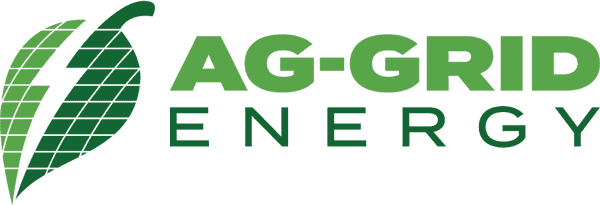How It Works: From Offer to Operating to Profitable
Ag-Grid Energy’s waste to energy business model is designed to be profitable, primarily to share profits with dairy farmers and secondarily to execute financially viable projects in the waste to energy industry.
Conditions for an offer
Achieving profitability is a challenge with multiple components.
- To ensure sufficient revenue from the sale of electricity or renewable natural gas, the farm must be in a state that supports relatively high prices and/or high-value renewable energy credits. Note: Revenue from government grants and incentives that support production of renewable energy can make some projects financially viable that otherwise would not be
- To ensure sufficient revenue from fees for accepting food waste, Ag-Grid prefers to partner with dairy farms in states that have banned disposal of food waste in landfills
- To minimize greenhouse gas emissions from trucking food waste to the farm’s anaerobic digester, a sufficient volume of food waste must be available within 50 miles
- To ensure sufficient manure for a successful operation, Ag-Grid seeks to partner with dairy farms that have between 1,000 and 4,000 cows; 3,000 is average
- The dairy farm must be willing to lease about 10 acres of land close to its manure storage container or barn and enable ingress and egress for trucks
When the above conditions can be met, Ag-Grid offers the dairy farm’s owners the opportunity to form an equity partnership for development and operation of an anaerobic digester.
Becoming operational
Ag-Grid Energy creates a detailed business plan for the specific project and works with our experienced Development Partners to put the plan into action. Key parts of the plan are:
Permitting
- Working with Sanborn Head to obtain all necessary permits for regulatory compliance
Financing
- Working with Green Harbor Energy to broker and manage renewable energy credits
- Working with UGI Energy Services (UGIES) to support project development and execution; UGIES is an equity partner in Ag-Grid Energy
- Working with Live Oak Bank to provide debt service for the anaerobic digester projects
- Working with US Department of Agriculture (USDA) to provide support via the Rural Energy for America (REAP) program on farm-based projects
Procurement
- Working with Gridwealth to source the entities that will purchase our green electricity or renewable natural gas
- Working with Ecostrat to source a supply of appropriate food waste from food processing plants, grocery stores, and large restaurants in the area and secure long-term contracts with them
- Working with Wind River Environmental to arrange for transportation of food waste from its source to the anaerobic digester
Construction
- Working with Martin Construction Resource for engineering, procurement, and construction (EPC) of the anaerobic digester
Becoming operational has become more costly as demand for anaerobic digesters has grown. Project costs have significantly increased due to demand and supply-chain issues, making it difficult for farmers to develop projects independently. Experienced partners and developers help streamline the time from development to profitability.
Achieving Profitability
Once all permits have been obtained and the anaerobic digester and all other infrastructure is operational, the final step is connecting the digester to a power distributor or end user so that the project can begin to make money by selling energy.
If the project is producing electricity, it must be connected to the electric grid. Unfortunately, electricity-producing projects tend to stall for months at the pre-connection stage because states do not have the capacity to keep up with the flow of renewable energy projects awaiting connection to the power grid.
If the project is producing RNG, there are several options for interconnection:
- Injection into a fossil natural gas pipeline
- A “virtual pipeline” in which compressed RNG is transported by truck to a receiving facility that can decompress it for pipeline injection or on-site use
- On-site use in place of or mixed with fossil natural gas for vehicle fuel or thermal applications such as boilers and kilns
Use of RNG is accelerating due to the 2022 Inflation Reduction Act, which provides the opportunity to get 30%-50% tax credits for RNG projects.
